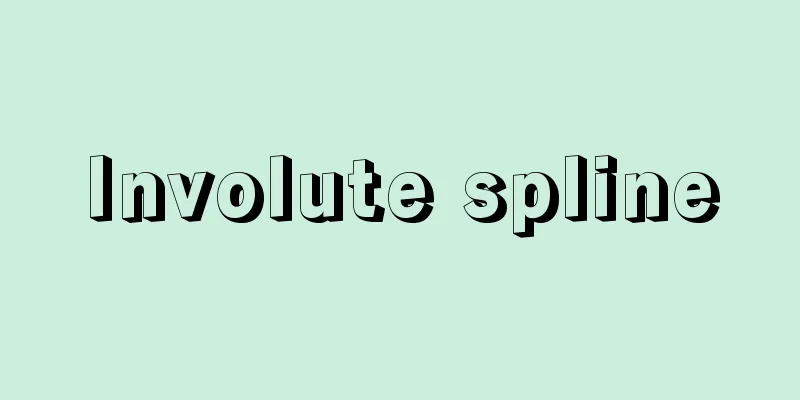Medical insurance - Iryohoshi

|
A general term for medical security in social security. In the narrow sense, it is a concept that includes medical expense security, and in the broad sense, it includes the medical care delivery system. When broadly speaking, medical security in developed countries can be categorized according to the degree of government involvement: countries where both medical expense security and the medical care delivery system are largely socialized with the public sector at the center (UK, Nordic countries), countries where medical expense security is socialized but the medical care delivery system coexists with the private sector (Japan, Germany, France), and countries where both medical expense security and the medical care delivery system are heavily weighted toward the private sector (USA). In addition, when looking at public medical expense security systems, the UK and Nordic countries have a health service system funded by taxes, Japan, Germany, and France have a social insurance system with separate systems by occupation, and the US only has social insurance (Medicare) for the elderly and disabled and medical assistance (Medicaid) for low-income earners. Japan's medical security is based on a universal health insurance system in which all citizens are enrolled in the health insurance system, supplemented by various publicly funded medical systems (Atomic Bomb Victims Assistance Act, Infectious Diseases Act, Mental Health and Welfare Act, Public Assistance Act, Comprehensive Support Act for Persons with Disabilities, Child Welfare Act, Maternal and Child Health Act, Intractable Diseases Act, etc.). In terms of the medical care system, most general clinics are private, either individuals or medical corporations, and about 80% of hospitals (about 70% in terms of the number of hospital beds) are also private. [Yasuhiko Yamazaki July 19, 2016] "Health Care Security Act and Nursing Care Security Act," edited by the Japanese Social Security Law Association (2001, Horitsu Bunkasha)" ▽ "Health Care System Reform and the Function of Insurers," edited by Yamazaki Yasuhiko and Ogata Yuya (2003, Toyo Keizai Shinposha)" ▽ "Tanaka Shigeru and Niki Tatchi (eds.), International Comparison of Health Care System Reform (2007, Keiso Shobo) " ▽ "Health Care Reform: From Crisis to Hope," by Niki Tatchi (2007, Keiso Shobo) " ▽ "Health Care Reform and the Choice of Funding Sources," by Niki Tatchi (2009, Keiso Shobo)" ▽ "The Tomorrow of Social Security: Trends and Issues in Japan and the World," expanded edition, by Nishimura Atsushi (2010, Gyosei)" ▽ "Health Care in Japan: Systems and Policies," by Shimazaki Kenji (2011, University of Tokyo Press)" ▽ "An Introduction," by Mano Toshiki "Medical Policy" (2012, Chuokoron-Shinsha)" ▽ "Matsuda Shinya, What is the problem with medical care? Japan's medical model in a super-aged society" (2013, Keiso Shobo)" ▽ "Ikegami Naoki, Interpreting medical and nursing care issues" (2014, Nihon Keizai Shimbun Publishing)" ▽ "Iwabuchi Yutaka, Japan's medical care - its structure and new developments" (2015, Chuohoki Publishing)" ▽ "Niki Tatchi, Community-based care and regional medical cooperation" (2015, Keiso Shobo)" ▽ Shimazaki Kenji, Rethinking medical policy - the future of universal health insurance" (2015, Chikuma Shobo)" ▽ "Health Insurance Association of Japan, edited, Medical security in charts and figures, various years' editions (Gyosei)" ▽ "Trends in insurance and pensions, edited and published by the Health, Labor and Welfare Statistics Association, various years' editions" [References] | | |Source: Shogakukan Encyclopedia Nipponica About Encyclopedia Nipponica Information | Legend |
|
社会保障における医療に関する保障の総称。狭義には医療費の保障、広義には医療提供体制をも含む概念である。先進諸国の広義の医療保障について、政府が関与する程度によって類型化すると、医療費保障および医療供給体制ともに公的部門中心で大きく社会化した国(イギリス、北欧諸国)と、医療費保障は社会化しながらも医療提供体制は民間部門と公的部門を併存させている国(日本、ドイツ、フランス)、医療費保障および医療提供体制ともに民間部門の比重が高い国(アメリカ)に分けられる。また、公的な医療費保障システムについてみると、イギリスや北欧は税財源による保健サービス方式、日本、ドイツ、フランスは職業別に制度が分立した社会保険方式であり、アメリカは高齢者・障害者を対象とする社会保険(メディケア)と低所得者を対象にした医療扶助(メディケイド)があるのみである。 日本の医療費保障は、全国民が医療保険制度に加入する国民皆保険体制を基本とし、これを補足する形で各種の公費負担医療制度(原爆被爆者援護法、感染症法、精神保健福祉法、生活保護法、障害者総合支援法、児童福祉法、母子保健法、難病法など)がある。また、医療提供体制では、一般診療所はほとんどが個人・医療法人などの民間で、病院も約8割(病床数では約7割)が民間である。 [山崎泰彦 2016年7月19日] 『日本社会保障法学会編『医療保障法・介護保障法』(2001・法律文化社)』▽『山崎泰彦・尾形裕也編著『医療制度改革と保険者機能』(2003・東洋経済新報社)』▽『田中滋・二木立編著『医療制度改革の国際比較』(2007・勁草書房)』▽『二木立著『医療改革――危機から希望へ』(2007・勁草書房)』▽『二木立著『医療改革と財源選択』(2009・勁草書房)』▽『西村淳著『社会保障の明日――日本と世界の潮流と課題』増補版(2010・ぎょうせい)』▽『島崎謙治著『日本の医療――制度と政策』(2011・東京大学出版会)』▽『真野俊樹著『入門 医療政策』(2012・中央公論新社)』▽『松田晋哉著『医療のなにが問題なのか――超高齢社会日本の医療モデル』(2013・勁草書房)』▽『池上直己著『医療・介護問題を読み解く』(2014・日本経済新聞出版社)』▽『岩渕豊著『日本の医療――その仕組みと新たな展開』(2015・中央法規出版)』▽『二木立著『地域包括ケアと地域医療連携』(2015・勁草書房)』▽『島崎謙治著『医療政策を問いなおす――国民皆保険の将来』(2015・ちくま書房)』▽『健康保険組合連合会編『図表で見る医療保障』各年版(ぎょうせい)』▽『厚生労働統計協会編・刊『保険と年金の動向』各年版』 [参照項目] | | |出典 小学館 日本大百科全書(ニッポニカ)日本大百科全書(ニッポニカ)について 情報 | 凡例 |
<<: Ilinden Uprising - Ilinden Broom
>>: Medical insurance - Iryohoken
Recommend
Federation internationale des quilleurs (English)
...The Japan Professional Bowling Association was...
Malaparte - Curzio Malaparte
Italian novelist and critic. His real name was Ku...
Gerard, J.
…However, during this period, many fake specimens...
Family workers - Kazokujugyosha
This refers to family members of self-employed pe...
Voucher-style bookkeeping
Vouchers were introduced to Japan in the early Mei...
Hui people
→Hui Source : Heibonsha Encyclopedia About MyPedia...
National coalition government - National coalition government
A cabinet formed by including the opposition part...
Gabled
This type of roof has two rectangular surfaces of...
Mordoviya
…Republic within the Russian Federation. Before t...
Polar
A type of worsted fabric. It is woven in a plain o...
Malindi (English spelling)
Along with the seaport cities of Mombasa and Kilwa...
Morning God Play - Asagami Asobi
...The first day of the festival is called "...
Lonk
…Many of them have horns. Representative breeds i...
Organization chart - Soshikizu (English spelling) organization chart
A diagram showing the structure of an organization...
Chatellenie
...As a result, the classical manorial system col...









